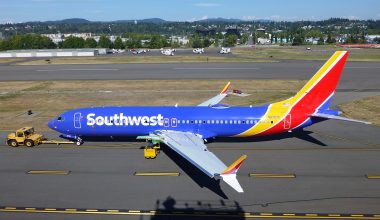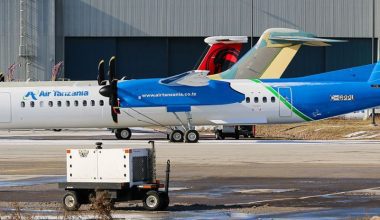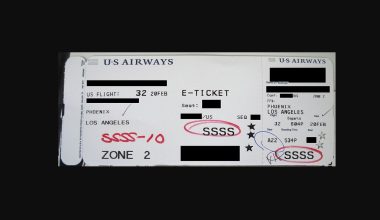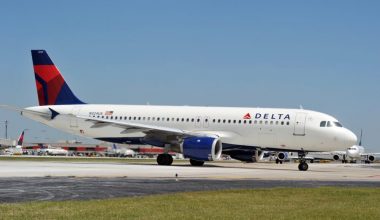Midway Airlines was a Chicago-based carrier founded in the 1970s with hopes of breathing new life into Midway International Airport. It was the first airline to commence operations after President Carter passed the deregulation bill 1978. However, the upstart couldn’t survive the turbulent airline market and went bankrupt in 1991.
Following Midway Airlines’ cessation, a group of investors bought the ‘Midway’ moniker to form a new US regional carrier. The new venture rose from the ashes of former commuter carrier Jet Express and began its scheduled services in November 1993. Although it adopted a different approach to serving US aviation, it faced a similar fate as previous Midway Airlines. After nearly a decade of operations, North Carolina-based Midway Airlines ceased operations on October 30, 2003.

What happened to Midway Airlines? What was the reason behind the demise of both Midway Airlines? Let’s find out.
The original/initial Midway Airlines
The original Midway Airlines came from Midway International Airport- the major commercial air facility serving Chicago, Illinois. The carrier traces its root to October 13, 1976, when it filed an application with the Civil Aeronautics Board (CA) for an AOC. Although the carrier secured its certification six weeks before the passage of the Airline Deregulation Act 1978, operations didn’t start until one year later. So, Midway Airlines became the first post-deregulation start-up, with scheduled service beginning on October 31, 1979.
The airline started its commercial life by offering nonstop flights from the Chicago Midway hub to Kansas City, Detroit, and Cleveland Lakefront. Midway first emerged as a low-cost carrier modeled after the highly-successful Southwest Airlines.
Also Read: Bankruptcy compels Air Berlin to shut down its flights
Midway’s scheduled operations became an instant success thanks to its no-frills, low-cost philosophy. As a result, the carrier expanded its presence widely in the 1980s.
Midway added five more DC-9s to its fleet less than a year after its commencement. The flight network expanded further to include St. Louis, Missouri, LaGuardia Airport, and Washington in Arlington, Virginia.
Launch of ‘Midway Metrolink’
In late 1981, top legacy carriers, including United, American, and TWA, initiated fare wars at Chicago O’Hare. The move was detrimental to Midway Airlines as it nearly pushed the carrier out of the O’Hare market. Realizing the need to target high-yield corporate traffic to secure funding, Midway’s president launched the new ‘Midway Metrolink’ on June 19, 1983.
Midway Metrolink was a one-class business service providing four-abreast seating and elevated cabin products for premium travelers. The carrier featured this service on select flights operated by Douglas DC-9s.
As it occurred, Midway Metrolink proved to be a commercial failure, leading to the resignation of Midway’s president Arthur Bass.

In 1984, the Chicago-based carrier purchased most of the assets of financially-stricken Air Florida. The acquisition of the bankrupt Air Florida allowed Midway to penetrate further into the Caribbean. It set up a no-frills subsidiary named Midway Express to operate flights to the Caribbean. The stand-alone Midway Express service also included flights to Air Florida’s former tourist routes like Miami, Orlando, Fort Lauderdale, etc.
After Bass’ resignation, David R. Hinson took up the mantle and led the company as CEO from 1985 to 1991. He merged two airlines and played an instrumental role in flourishing the carrier’s operations.
Destinations served by Midway Airlines
Midway offered scheduled services to 40 domestic and five international destinations at the height of its operations. The carrier flew from its Chicago Midway hub to major US airports like Atlanta, Boston, Dallas Fort/Worth, Fort Lauderdale, Las Vegas, Los Angeles, and Miami.
Beyond the US, Midway flew internationally to Montreal and Toronto in Canada and Nassau, St. Croix, and St. Thomas in the Caribbean.

As a hometown airline, the carrier earned loyalty from its customers in the Chicago South Side. Loyal flyers appreciated Midway’s attentive service, friendly staff behavior, and signature in-flight service items like hot hand towels.
Fleet of Midway Airlines
The Illinois-headquartered airline operated a mix of Boeing 737, DC-9, and MD-80 series aircraft throughout its history. Across its 12-year-long career, it used the following airliners:
- Boeing 737-200
- McDonnell Douglas DC-9-14/15/31/32
- McDonnell Douglas MD-81/82/83/87/88
The most dominant model Among these aircraft types was McDonnell Douglas DC-9-31. First introduced in 1984, Midway operated 38 examples of this model during its lifetime. The next dominant variant was Douglas DC-9-32, with 17 units.
The carrier also maintained a strong fleet of 14 Boeing 737-200 narrowbody jets, mostly serving Caribbean and key Floridan routes.
The demise of Midway Airlines
In June 1989, Midway Airlines launched hub operations at Philadelphia Airport by acquiring bankrupt Eastern Air Lines’ assets. Chicago-based Midway rolled out low introductory fares to 11 new nonstop routes out of its new hub.

However, less than a year later, the carrier quit its new hub and sold its entire Philadelphia assets to USAir. The sluggish traffic, bitter fare-war competition, and high jet fuel costs compelled the carrier to sell its operations. Midway’s ambitious plan of creating a north-south route network was doomed when other carriers competed with a vengeance.
The rival USAir acquired Midway’s landing slots, international routes, and 11 gates at Philadelphia Airport at $67.5 million. Due to unfavorable external conditions, the carrier began to bleed money substantially. It was financially drained and filed Chapter 11 of the US Bankruptcy Code in March 1991. The carrier closed its curtain on November 13, 1991, and was dissolved in 1992.
The second incarnation of Midway Airlines
With the demise of the original Midway Airlines, another carrier bearing the same name started operating in 1993. The new airline stepped into the US commercial aviation by operating scheduled flights on the Chicago-LaGuardia route.
Starting from obscurity, the second Midway Airlines gradually expanded its services to Philadelphia, Boston, Allentown, Washington DC, etc.
Move to Durham, North Carolina
1995 Midway Airlines shifted its hub from Chicago Midway to North Carolina due to harsh competition and tight gate space at MDW. The carrier chose Raleigh-Durham (RDU) as its operational hub, replacing American Airlines as RDU’s hub carrier in 1995.
Midway leaned heavily on East Coast traffic and conducted almost 200 daily flights from RDU to 33 East Coast destinations. The Morrisville, N.C.-based carrier flew directly to principal cities like Boston, Hartford, Long Island, Newark, Tampa, Orlando, etc. Now that the carrier was based between US’ North and South, its flight offerings benefitted many customers flying between the Northeast and Southeast.
The arrival of Airbus A320-200s
Initially, Midway Airlines relied on Fokker 100 regional jets to serve its East Coast network. As it grew, the carrier procured four new $45 million Airbus A320s to venture into the Caribbean market. Unfortunately, the Caribbean expansion plans didn’t work out due to hurricanes. Midway had no choice but to deploy these newly-inducted narrowbodies elsewhere.
With new A320-200s, the carrier wedged into long-haul routes like Cancun, Las Vegas, Los Angeles, San Juan, etc.
As it turned out, Midway failed to grab the market share in these routes. So, it pulled out of these segments and returned three of its A320s. Instead, it focused on the Bombardier CRJ-200 regional jets for route expansion.
Midway Airlines started to phase out Fokkers in favor of fuel-efficient Boeing 737-700s at the turn of the century. The aging F200s were increasingly becoming costly to maintain and moving toward the end of their viable lifespan. So, it placed orders for 15 new 737-700s to carry out flight operations.
Cash flow crisis
Carolina-based Midway was grievously wounded by the high-tech slump of 2000-01. Technology firms near its hub in North Carolina tightened their belts and cut corporate travel expense accounts by as much as 90%. With corporate traveling accounting for over 65% of its regional traffic, the drop in business travel created a major cash flow crisis for Midway.
Bankruptcy and cessation of operations
The slump in business travel, fuel, and labor costs, and, most importantly, the relentless competition made business untenable. The ailing carrier filed for Chapter 11 bankruptcy on August 13, 2001, and cut service to major airports to survive in the languishing economy. It laid off hundreds of employees, downsized the fleet, and scaled back its operations.

Although a private equity firm pumped millions to patch Midway’s balance sheet, it wasn’t enough to keep the airline running.
The 9/11 terrorist attacks, slowed air traffic growth, and unstable economic environment dealt a serious financial blow to Midway. The revenue tumbled, and the carrier didn’t have enough capital to stay in the black. Without sufficient capital acquisition, it was only a matter of time before Midway Airlines exited the industry.
The dreams of conquering the US skies ended when Midway Airlines completely shut down on October 30, 2003. After nearly one decade of serving the US industry, the carrier permanently ceased operations.
This way, two US airlines sharing the same moniker, ‘Midway Airlines,’ met a similar fate and forever disappeared from the aviation landscape.






